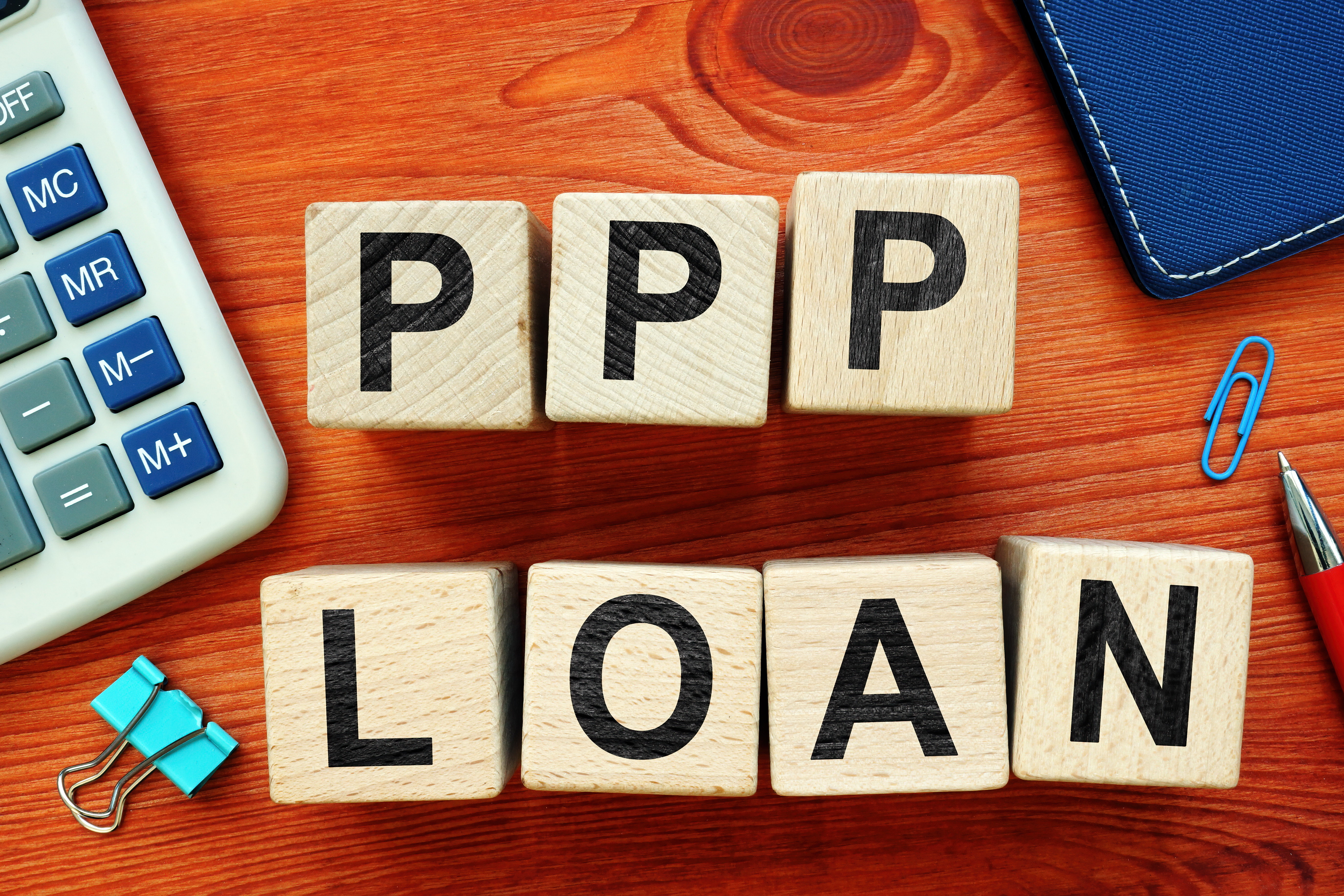5 min read
Will your PPP loan be forgiven? What you need to know now
Guest post by Alan Greenwell and Rachel Graves The Paycheck Protection Program (PPP) was established in April as part of the Coronavirus Aid,...
Expert payroll management services with a personal touch.
View Solution Read Guide HR Support
HR SupportSimplify and personalize HR with a team of HR experts on-demand.
View Solution Read Guide Time & Attendance
Time & AttendanceWhy spend more unnecessary time and money managing your workforce?
View Solution Read Guide Hiring & Onboarding
Hiring & OnboardingTurn your candidates into employees with hiring & onboarding solutions.
View Solution Read GuideAdd On Solutions automate everyday tasks, prevent mistakes, and simplify business compliance.
View SolutionHelpful downloads and eBooks to empower your business.
Helpful tax and HR alerts to help keep your business compliant.
Payroll and tax-related forms and documents.
Horizon's blog provides valuable insight into payroll, compliance, human resources, and more.
See our client success stories for a case study on how we can help your business.
Payroll and HR strategy requires intelligent technology, personal attention and specialized expertise in the needs and nuances of your business.
We provide payroll and tax processing services for businesses from 1 to 1,000 employees or more. Today, we have nearly 1,000 customers in 40 states.
5 min read
![]() Brad Johnson
:
September 21, 2020 at 9:17 AM
Brad Johnson
:
September 21, 2020 at 9:17 AM
In August 2020, The Small Business Administration (SBA) closed the Paycheck Protection Program (PPP) application window and issued the guidance, "Frequently Asked Questions (FAQs) on PPP Loan Forgiveness". The first step towards PPP remittal is knowing what costs are (and aren't) eligible:
Eligible PPP Loan forgiveness costs
Ineligible PPP Loan forgiveness costs
Learn the PPP loan forgiveness rules and guidance for each and how to ace the application below.
Eligible PPP Loan forgiveness costs: Payroll
Salaries and paychecks are eligible for PPP forgiveness if the:
Cash compensation costs up to $100,000 per employee, per year before tax deductions are eligible for remittal. Employee benefits payments, tips, commissions, bonuses, hazard pay, or other forms of incentive pay qualify for forgiveness under this category.
Group healthcare benefit costs,"paid or incurred by the borrower during the Covered Period or the Alternative Payroll Covered Period," are forgivable under the newly issued guidance. This includes premiums and contributions made by employers only, and does not extend before or after the CP or Alternative Payroll Covered Period (APCP).
Retirement contributions made by employers to employee plans are eligible for remittal if they were paid or incurred by the borrower during the Covered Period or Alternative Payroll Covered Period. However, the FAQ PPP Forgiveness guidance states, "employer contributions for retirement benefits included in the loan forgiveness amount as payroll costs cannot include any retirement contributions deducted from employees’ pay or otherwise paid by employees."
Owner compensation forgiveness is capped at $20,833 per individual that has an ownership stake in multiple companies, or $15,385 per individual for borrowers who received their PPP Loan before June 5 and elected an 8 week Covered Period.
The forgiveness rules for C Corps, S Corps, Self-employed Schedule C (or Schedule F) filers, General Partners, and LLC Owners are as follows:
C Corps are eligible for loan forgiveness up to the amount of 2.5/12 of 2019 employee cash compensation, employer state and local taxes, employer health insurance contributions, and employer retirement contributions. Additionally, the guidance states, “Payments other than for cash compensation should be included on lines 6-8 of PPP Schedule A of the loan forgiveness application (SBA Form 3508 or lender equivalent), for borrowers using that form, and do not count toward the $20,833 cap per individual.”
S Corps have the same forgiveness rules as above, minus the health care component. “Employer contributions for health insurance are not eligible for additional forgiveness for S-corporation employees with at least a 2% stake in the business, including for employees who are family members of an at least 2% owner under the family attribution rules of 26 U.S.C. 318, because those contributions are included in cash compensation,” according to the FAQ PPP Forgiveness guidance.
Self-employed Schedule C (or Schedule F) filers such as sole proprietors, self-employed individuals, and independent contractors, are eligible for loan forgiveness up to the amount of 2.5/12 of 2019 net profit as reported on IRS Form 1040 Schedule C line 31[link ] . “Separate payments for health insurance, retirement, or state or local taxes are not eligible for additional loan forgiveness; health insurance and retirement expenses are paid out of their net self-employment income.”
General Partners are eligible for loan forgiveness up to 2.5/12 of their 2019 net earnings from self-employment that is subject to self-employment tax, which is computed from 2019 IRS Form 1065 Schedule K-1 box 14a, multiplied by 0.9235 for loan forgiveness if the payments to partners are made during the CP or Alternative Payroll Covered Period (APCP). Separate payments for health insurance, retirement, or state or local taxes are not eligible for additional loan forgiveness. If the partnership did not submit its 2019 IRS Form 1065 K-1s when initially applying for the loan, it must be included with the partnership’s forgiveness application.
LLC Owners must follow the instructions that apply to how their business was organized for tax filing purposes for tax year 2019, or if a new business, the expected tax filing situation for 2020.
If your original application didn’t include the above form(s), the SBA requires you include this information in your PPP loan forgiveness application.
Eligible PPP Loan forgiveness costs: Non-Payroll
Utility costs for your business like electricity are eligible for PPP forgiveness if they satisfy any of the following rules:
Business mortgages and leases on real or personal property are eligible for forgiveness. Your business' auto loan, business mortgage interest costs, and business rent or lease costs fall under forgivable non-payroll costs, but only during the Covered Period.
Example: You renewed a five year lease on your office space in February before your Covered Period began in June. Lease payments before or after your Covered Period do not qualify, only lease payments for the duration of your CP can be remitted.
Ineligible PPP Loan forgiveness costs
Costs that aren’t eligible for PPP loan remittal include employee health care premiums, employee retirement contributions, owner compensation that exceed the above limits, non-payroll costs otherwise not considered to be eligible costs and interest on unsecured credit. When filing your PPP Loan forgiveness application, omit these ineligible costs or risk denial.
How to Ace PPP Loan Forgiveness Application
Here are five steps and tips we recommend for acing your PPP loan forgiveness application:Failure to accurately file your PPP Loan forgiveness application could result in its denial and you having to pay back the full amount plus interest. Contact our experts with any challenges or questions that you come across during the process.

5 min read
Guest post by Alan Greenwell and Rachel Graves The Paycheck Protection Program (PPP) was established in April as part of the Coronavirus Aid,...

5 min read
You’ve probably weathered many changes to your company and staffing recently. And that includes staying compliant with new legislation that requires...

8 min read
If you own a business, you know how important managing payroll can be. And as your business grows, it becomes subject to various payroll-related...